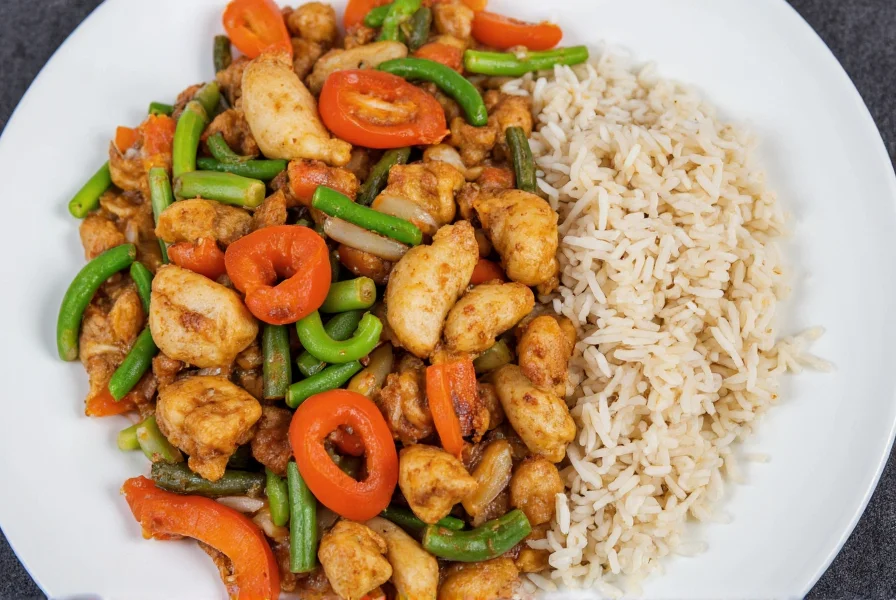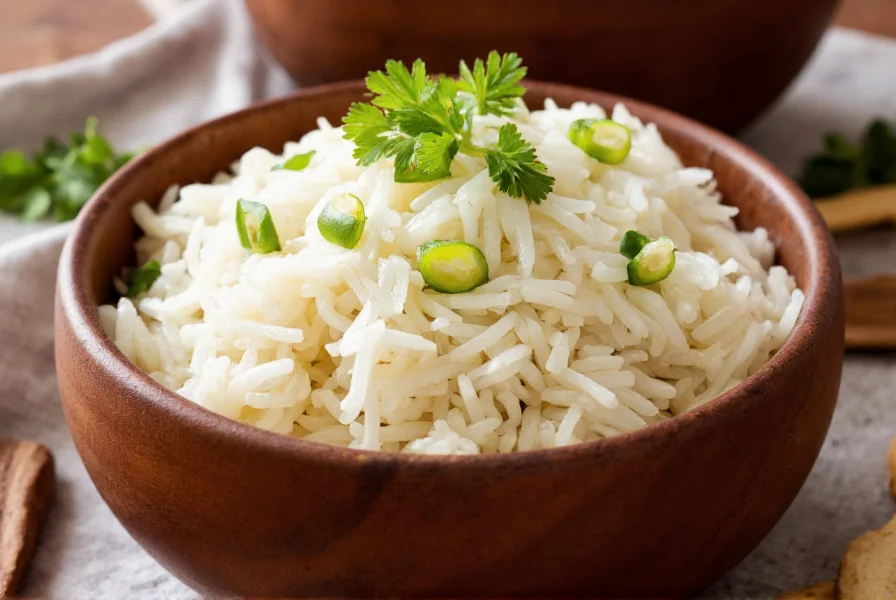The perfect ginger rice recipe combines 1 cup jasmine rice, 1½ cups water, 2 tablespoons freshly grated ginger, 1 tablespoon neutral oil, and ½ teaspoon salt. Rinse rice until water runs clear, then combine all ingredients in a pot. Bring to a boil, reduce heat to low, cover, and simmer for 15 minutes. Let rest 10 minutes before fluffing. This simple technique yields fragrant, fluffy ginger rice every time.
If you're searching for an easy ginger rice recipe that delivers restaurant-quality results at home, you've found it. Ginger rice transforms ordinary steamed rice into an aromatic side dish that complements Asian cuisine perfectly. This guide reveals the authentic technique professional chefs use to achieve perfectly cooked grains with balanced ginger flavor—not too sharp, not too mild.
Why This Ginger Rice Recipe Works
Unlike many online recipes that simply add ginger to regular rice cooking, this method incorporates three critical elements for success: proper rice preparation, ginger infusion timing, and resting technique. The key is using freshly grated ginger rather than powder, which provides brighter flavor without bitterness. Many home cooks make the mistake of adding ginger too late or using pre-ground spice, resulting in flat or overpowering ginger taste.
Essential Ingredients Explained
Understanding each component ensures your ginger rice for beginners turns out perfectly:
| Ingredient | Why It Matters | Substitution Options |
|---|---|---|
| Jasmine rice (1 cup) | Naturally fragrant grains that absorb flavors beautifully | Basmati rice (adjust water ratio) |
| Fresh ginger (2 tbsp grated) | Provides bright, complex flavor without bitterness | 1 tsp ground ginger (use half amount) |
| Neutral oil (1 tbsp) | Coats grains to prevent sticking and enhances texture | Sesame oil (¼ tsp for stronger flavor) |
Step-by-Step Cooking Instructions
Follow these precise steps for perfect ginger rice every time:
- Rinse thoroughly: Place rice in fine-mesh strainer and rinse under cold water until water runs clear (2-3 minutes). This removes excess starch.
- Prepare ginger: Peel and finely grate fresh ginger. Squeeze out excess liquid using cheesecloth or paper towels.
- Combine ingredients: In a medium saucepan, combine rinsed rice, water, grated ginger, oil, and salt.
- Initial boil: Bring to a rolling boil over medium-high heat without stirring.
- Simmer gently: Reduce heat to lowest setting, cover tightly, and cook 15 minutes.
- Rest undisturbed: Remove from heat and let stand covered for 10 minutes (critical for texture).
- Fluff and serve: Gently fluff with fork, removing any large ginger pieces if desired.

Pro Tips for Flavorful Ginger Rice
These professional techniques elevate your best ginger rice recipe from good to exceptional:
- Water temperature matters: Use room temperature water, not cold, for more even cooking
- Ginger preparation: Freeze ginger before grating for easier handling and finer texture
- Pot selection: Use a heavy-bottomed pot with tight-fitting lid to prevent steam escape
- Resting is non-negotiable: Skipping the rest period causes mushy or unevenly cooked rice
- Flavor boost: Add one scallion (white part only) when cooking for subtle onion notes
Popular Variations to Try
Customize this versatile simple ginger rice instructions for different occasions:
| Variation | Modification | Best Served With |
|---|---|---|
| Lemon-Ginger Rice | Add 1 tsp lemon zest with ginger | Grilled fish or chicken |
| Garlic-Ginger Rice | Sauté 1 minced garlic clove in oil first | Stir-fries and curries |
| Coconut Ginger Rice | Replace ½ cup water with coconut milk | Thai or Vietnamese dishes |
Serving and Storage Guidelines
Maximize your flavorful ginger rice cooking tips with these recommendations:
Serving temperature: Ginger rice tastes best served warm but not piping hot. The flavors develop as it cools slightly from cooking temperature.
Pairing suggestions: Complements Asian-inspired dishes particularly well, including stir-fries, teriyaki proteins, and vegetable curries. The ginger flavor cuts through rich sauces beautifully.
Storage instructions: Cool completely before storing in airtight container. Refrigerate for up to 4 days. For best results when reheating, sprinkle 1-2 teaspoons water per cup of rice and cover while microwaving.
Freezing option: Spread cooled rice in single layer on baking sheet, freeze until solid, then transfer to freezer bags. Use within 2 months. Thaw in refrigerator before reheating.

Troubleshooting Common Issues
Resolve these frequent ginger rice recipe problems:
- Rice too wet: You likely used too much water or lifted the lid during cooking. Next time, reduce water by 2 tablespoons and ensure tight lid seal.
- Rice too dry: Insufficient water or overcooking. Increase water by 2 tablespoons and check heat level—simmer should be barely visible.
- Ginger flavor too strong: Reduce ginger to 1½ tablespoons or squeeze more liquid from grated ginger before adding.
- Burnt bottom: Pot too thin or heat too high. Use heavier pot and ensure burner size matches pot bottom.
Frequently Asked Questions
Can I use ground ginger instead of fresh in this recipe?
You can substitute ground ginger, but use only ½ teaspoon instead of 2 tablespoons fresh. Fresh ginger provides brighter flavor and aromatic complexity that ground ginger can't match. If using ground ginger, add it with the rice and water rather than squeezing out liquid.
Why must I rinse the rice before cooking ginger rice?
Rinsing removes excess surface starch that causes rice to become gummy. For perfect texture in your ginger rice recipe, rinse until the water runs clear—this typically takes 2-3 minutes. Skipping this step often results in clumpy, unevenly cooked rice that doesn't absorb the ginger flavor properly.
How can I prevent my ginger rice from sticking to the pot?
Three key factors prevent sticking: using enough oil (1 tablespoon per cup of rice), ensuring your pot has a heavy bottom, and never stirring after the initial boil. The oil coats each grain, while the heavy pot distributes heat evenly. If you notice sticking, reduce heat slightly during the simmer phase.
Can I make this ginger rice recipe in a rice cooker?
Absolutely. Use the same ingredient ratios and add everything to the rice cooker. After the cooking cycle completes, let it rest for 10 minutes before fluffing. Rice cookers with a 'sushi rice' setting work particularly well as they manage the resting phase automatically.











 浙公网安备
33010002000092号
浙公网安备
33010002000092号 浙B2-20120091-4
浙B2-20120091-4